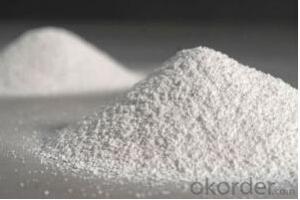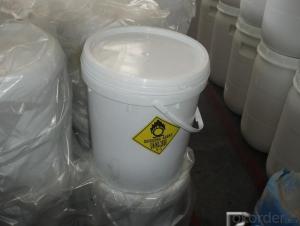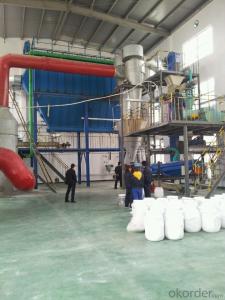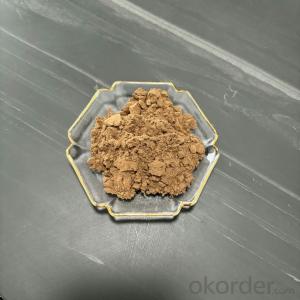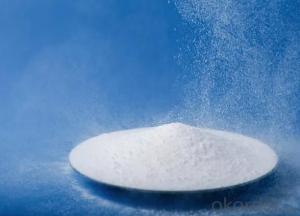SDIC In Water Treatment Chemicals by Granular Tablets Powder
- Loading Port:
- Tianjin
- Payment Terms:
- TT OR LC
- Min Order Qty:
- 17 m.t.
- Supply Capability:
- 1800 m.t./month
OKorder Service Pledge
OKorder Financial Service
You Might Also Like
SDIC
SDIC Introduction:
SDIC White powder or grain with chlorine odor . It is a strong oxidant and chlorate agent and can dissolved in water easily . Its aqueous solution assumes weak acidity and the active chlorine in its dry products lose little when it is stored for a long time at the atmospheric temperature .
Quick dissolving tablet within 10 minutes. It is used in hospital, hygienic, disaster protection, food industry, and aquaculture etc.
The tablet have 0.5g, 1.0g, 3.3g, 5g, 7g, 10g.
Packed in 100g, 500g, 1kg, 2kg, 3kg & 5kg plastic bucket.
And we can supply tablet form: 1g, 2.7g, 3.3g, 3.5g, 5g, 10g & 20g.Package: in 500g, 1kg, 2kg, 5kg or do with customer requirements
SDIC Imange:
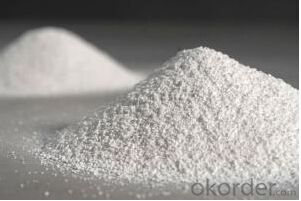
SDIC Specification:
Chemical Name | Sodium Dichloroisocyanurate | |
Molecular Formula: | C3O3N3HCL2NA | |
Molecular Weight: | 220.96 | |
CAS Number: | 2893-78-9 | |
Product | 60% | 56% |
Available chlorine(%,min) | 60 | 56 |
Moisture content(% max) | 5 | 8 |
PH Value(1% solution) | 6-7 | 6-7 |
Particles Size:
Mesh | 5~8 | 8~30 | 20~40 | 20~60 |
Main usage:
this products can effectively kill various germs, fung uses and viruses, specially A&B type hepatitis viruses. It is effective on killing algae, decolorizing cleaning water or bleaching .It can be widely used for epidemic prevention, livestock farming , industry and agriculture.
Package:
50KG PLASTIC DRUMS/ FIBER DRUMS.
25KG PLASTIC DRUMS/FIBER DRUMS.
1000KG BIG BAGS.
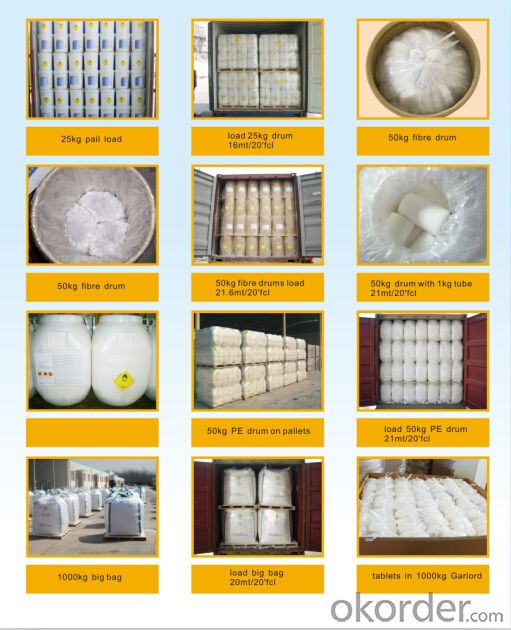
Or any other packages suggest by customers.
- Q:Pls help me define a catalyst.?
- A substance, usually used in small amounts relative to the reactants, that modifies and increases the rate of a reaction without being consumed in the process.
- Q:What is the principle of the catalyst? Why can change the rate of chemical reactions and their own without any change
- If you are not asking for a written, you can look at my words. The principle of the catalyst is to make the water muddy. It has to accelerate the chemical reaction, but also slow down the reaction. Catalyst ions into the solution, is to let the solution become muddy, and then should be the reaction of the ion collision probability is large, to speed up the reaction. The substance of the catalyst does not participate in the reaction, so it does not change. Are personal understanding, wrong please more inclusive. Thank you
- Q:What are the examples of chemical catalysts used in life?
- The use of new synthetic materials makes life more comfortable. Only wood, sand and grapes are natural building materials, but they need to be combined and protected with synthetic chemicals. Cement is a chemical product, As the adhesive used in the laminate and the metal used in the nail are chemical products, the glass is made by the chemist, and the improved product, such as heat-resistant glass (trade name Pyrex glass), becomes more tough. Paint is chemist design and creation, and many modern solid materials are also the same. Plastic is synthetic, they are used in kitchen and bathroom utensils, also used in the name of the product called Formica bakelite and its related materials, beverage bottles, Cutlery and utensils. Porcelain is made by chemists and used in kitchen and bathroom sinks and other fixtures. Metal is made of chemical changes made from ores. Aluminum was once a laboratory treasure, but used An electrochemical method, which now can be easily made from alumina, at least a portion of the carpet and decorative fabric used for the use of synthetic fibers and synthetic dyes to color. Freezer and air conditioner with special chemicals as coolant ; Gas and gas stoves can be used syngas or natural gas, the combustion process is still the chemical change.Our room with gas or oil industry to produce fuel to heat, this fuel is from the natural crude oil refining and chemical We have made use of synthetic chemical products and materials made in the chemical processing industry, such as plaster or wall panels, outer panels and roof panels, as well as tiles and carpets, to heat our buildings. The stove itself and the distribution of heat The pipes are made of chemical products - metal, insulating materials and ceramics. The current enters the home through the copper wire of the outsourced insulator, both of which are products of the chemical processing industry
- Q:How the catalyst accelerates the chemical reaction
- Add pigments
- Q:Can the catalyst be a reactant in chemistry?
- There is also a saying that the catalyst participates in the chemical reaction. In a general chemical reaction, the effect of the catalyst is to reduce the activation energy required for the reaction to occur, essentially to turn a more difficult reaction into two, In the second reaction, the catalyst in the first reaction plays the role of the reactant, and the catalyst in the second reaction plays the role of the product, so that the catalyst is not present before and after the reaction Variety.
- Q:Chemical reactions in the presence of impurities will cause catalyst poisoning, how to understand this sentence
- Catalyst poisoning reaction of raw materials contained in the trace impurities to the catalyst activity, selectivity significantly decreased or lost phenomenon. The nature of the poisoning phenomenon is a trace of impurities and the catalytic activity of the center of a chemical effect, the formation of non-active species. In the gas-solid heterogeneous catalytic reaction is formed in the adsorption complex. One is that if the toxic and active components of the role of weak, can be a simple way to restore the activity, known as reversible poisoning or temporary poisoning. The other is irreversible poisoning, it is impossible to restore the activity in a simple way. In order to reduce the side reaction activity, it is sometimes necessary to allow the catalyst to be selected for poisoning.
- Q:Co and No form a chemical equation for Co2 and No2 under the action of a catalyst
- Write the catalyst on the horizontal line, where NO is the oxidant and CO is the reducing agent
- Q:How does the catalyst affect chemical balance? Why the catalyst has no effect on the chemical equilibrium, for v-t diagram
- Negative catalyst increases the activation energy, so that the reaction time becomes longer
- Q:Who knows hydrogen and nitrogen in the high temperature, high pressure and catalyst conditions for the synthesis of ammonia chemical equation ah? Urgent! The SOS
- 3H2 + N2 ===== 2NH3
- Q:Write a chemical formula in a chemical laboratory without the use of a catalyst for oxygen
- 2Na2O2 + 2H2O = 4NaOH + O2 ↑
1. Manufacturer Overview |
|
|---|---|
| Location | |
| Year Established | |
| Annual Output Value | |
| Main Markets | |
| Company Certifications | |
2. Manufacturer Certificates |
|
|---|---|
| a) Certification Name | |
| Range | |
| Reference | |
| Validity Period | |
3. Manufacturer Capability |
|
|---|---|
| a)Trade Capacity | |
| Nearest Port | |
| Export Percentage | |
| No.of Employees in Trade Department | |
| Language Spoken: | |
| b)Factory Information | |
| Factory Size: | |
| No. of Production Lines | |
| Contract Manufacturing | |
| Product Price Range | |
Send your message to us
SDIC In Water Treatment Chemicals by Granular Tablets Powder
- Loading Port:
- Tianjin
- Payment Terms:
- TT OR LC
- Min Order Qty:
- 17 m.t.
- Supply Capability:
- 1800 m.t./month
OKorder Service Pledge
OKorder Financial Service
Similar products
New products
Hot products
Hot Searches
Related keywords

